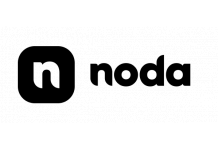The Value That Open Banking Brings to Each Market Player

- Dmitrii Barbasura, CEO at Salt Edge
- 09.09.2020 10:45 am Open Banking
Open banking fundamentally changes the landscape of the modern financial sector, stimulating all types of companies to release new services and making traditional banking products simpler, and more convenient, while removing additional costs. Open banking became a global trend that triggers a price-competitive response to innovations across the financial sector. It unlocks new opportunities for every financial ecosystem participant: third party providers (TPPs) that integrate with bank channels, banks, companies that use TPP services to offer innovative solutions, end users, and the regulator that looks over so that the ecosystem works.

TPPs are authorised service providers who integrate with open banking channels and render to businesses innovative services on top of account data and payment initiation. They benefit from open banking by having a considerably broader opportunity to provide their services:
- Create new analytical products based on financial data;
- Reduce the cost for products created through the use of standard APIs;
- Create new interfaces for interacting with end users, including voice control of accounts, chatbots, flexible notifications and triggers;
- Combine financial products with other areas (insurance, transportation, real estate, rental, e-shops, freelance, accounting, and others);
- Develop new payment options/channels for retailers with minimal fees;
- Eliminate risks associated with handling personal information.
By using open banking tools provided by TPPs, companies build new services for end users and improve customer experience. But most importantly, these companies get an impetus for further developments of their business processes, unfolding other valuable opportunities:
- Full automation of accounting, including bank and non-bank accounts;
- Providing access to financial information to the auditors in automatic way;
- Obtaining a commercial loan based on the company’s financial history;
- Centralised tracking of payment instruments issued to employees, for example, corporate cards;
- Automation of salaries and taxes payment process through a single interface;
- Automatic transfers between company accounts based on rules and external triggers;
- Use open banking APIs to receive or send payments with minimal fees;
- Elimination of the risk of fraudulent activities with bank cards, due to the fact that the user does not provide the authorisation details of the payment instrument (CVV, PIN, PAN) to the company;
- If there is a system of instant payments, then funds can be credited to the company’s account within a few seconds, eliminating the need to open a reserve account or wait for daily/weekly repayments.

End users are the main beneficiaries of the open banking movement; they’re the ones to use the services created by companies in the open banking framework. End users do not know much about open banking or might even feel hesitant and skeptical to use these services. That’s why governments and regulators must carry out broadscale campaigns to raise awareness about open banking initiatives. Open banking can considerably improve the quality of services for consumers:
- Tracking changes in bank accounts, receiving notifications of new transactions without the need to authenticate for every check;
- Obtaining analytics, budgeting recommendations for optimisation of personal/family accounts and transactions in a fully automated mode;
- Executing transactions via a single interface regardless of the payment instrument;
- Choosing the optimal payment instrument, considering offers and discounts;
- Paying bills automatically and setting recurring payments;
- Making transfers with a minimum commission to relatives and friends;
- Using financial information to obtain loans online, optimise repayments or receive bonuses;
- Passing online verifications to open a new account, register in freelance systems.
Banks represent the foundation of open banking. The advantages of PSD2 interfaces for banks are not so obvious at first glance – the end user has opportunities to choose from more products and change providers, as a result of which banks need to make more efforts to remain competitive. Nevertheless, the banks themselves can also benefit from providing access to their open banking channels or connecting to the channels of other banks:
- Using data from other banks to verify end users;
- Automatic loan granting based on financial history received from other financial and credit institutions;
- Identification of sources of funds or income;
- Providing merchants with the ability to instantly transfer funds online as payment for goods and services from any account of any bank;
- Providing end users with access to the bank’s financial products, using TPPs’ services as a distribution channel;
- Providing access to financial data and initiating payments in a secure and fully controlled manner;
- Reducing API development costs through the use of open standards;
- Providing premium APIs for new revenue streams and new channels for promoting bank services via TPPs;
- Reducing time to market and increasing income through the use of products from other banks or fintech.
All relations in the open banking framework are regulated and controlled by national regulators, and can’t exist without established rules and standards. At the national level, open banking plays an important socio-economic role by helping all members of society to access innovative services and promoting informed financial behavior. The entire society will benefit from open banking:
- Providing a competitive environment, where the advantage is on the side of the best solution, and not the solutions that historically accumulated huge user base;
- Stimulating innovation in historically conservative financial sector;
- Reduction of fees for banking services due to increased competition between banks and fintech;
- Providing supervision of new market players, in particular, fintech companies;
- Providing online access to all financial services, even in the most remote parts of the country;
- Reducing payment fees through the use of instant bank payments;
- Improving security of financial products and reducing fraud rates;
- Increasing financial literacy of the population.
Most of the listed values and opportunities have already existed on the markets of some countries before the introduction of open banking legal framework. However, they have not received proper distribution due to risks in implementation, high cost, or complete dependence on the closed banking API, the access to which has been open only to a limited circle of bank partners. The modern society is still in the nascent stage of exploring the real potential of what open banking can unfold for the whole financial ecosystem. Open banking is a major step towards taking benefits from a technological revolution in the banking industry which has been pending for a long time.
























